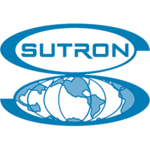Description

Adverity

Bigstream
Comprehensive Overview: Adverity vs Bigstream
Adverity
a) Primary Functions and Target Markets:
- Primary Functions: Adverity is a data analytics and intelligence platform aimed at helping organizations turn complex datasets into actionable insights. It specializes in data integration, data visualization, and cross-channel analytics, providing tools for automated data management and enabling users to create dashboards and reports.
- Target Markets: Adverity targets marketing professionals, data analysts, and business intelligence teams across various industries, including retail, e-commerce, and media agencies. It is particularly beneficial for companies engaging in digital marketing campaigns needing detailed analytics for optimization.
b) Market Share and User Base:
- Market Share: Adverity is a well-established player in the data analytics space, particularly popular among digital marketing agencies and enterprises looking for comprehensive data integration and intelligence solutions.
- User Base: The user base includes both large enterprises and smaller agencies. They have been expanding their client base internationally, with a significant presence in Europe and North America.
c) Key Differentiating Factors:
- Data Integration Capabilities: Adverity offers extensive data connectors for a wide range of platforms, enabling seamless data integration.
- Focus on Marketing Analytics: The platform is heavily oriented towards marketing analytics, providing tools specifically designed to meet the needs of marketing teams.
- Automation and Scalability: The solution is built to support automation of data workflows and is scalable to handle large volumes of data.
Bigstream
a) Primary Functions and Target Markets:
- Primary Functions: Bigstream is a software solution that accelerates big data processing by enhancing existing big data frameworks with hardware-based acceleration technologies, such as FPGAs, GPUs, and multi-core CPUs.
- Target Markets: It mainly targets industries that require large-scale data processing and analytics, such as finance, telecommunications, and research institutions focused on high-performance computing (HPC).
b) Market Share and User Base:
- Market Share: Bigstream has a niche market presence as it specializes in hardware-accelerated data processing. Its market share is smaller compared to broader analytics platforms but holds significant value in sectors requiring high-speed data analysis.
- User Base: The platform is used by organizations with demanding computational needs, particularly those already investing heavily in big data and high-performance hardware solutions.
c) Key Differentiating Factors:
- Hardware Acceleration: Bigstream's primary differentiation lies in its ability to leverage advanced hardware to accelerate data processing tasks significantly.
- Performance Optimization: It focuses on optimizing existing big data frameworks like Apache Spark for more efficient data processing.
- Unique Market Focus: The platform serves a niche market needing enhanced speed and efficiency for big data applications.
Tercept Unified Analytics
a) Primary Functions and Target Markets:
- Primary Functions: Tercept provides a unified analytics platform that primarily aggregates data from various advertising and affiliate networks, helping users with revenue optimization through automated data aggregation and reporting.
- Target Markets: Tercept targets digital publishers, ad networks, and affiliates seeking to optimize ad revenue. The platform is particularly useful for media companies and digital content providers involved in digital advertising.
b) Market Share and User Base:
- Market Share: Tercept occupies a smaller market segment focused on the digital publishing and advertising optimization niche. It is less known compared to comprehensive data platforms but effectively serves its specialized market.
- User Base: Includes digital publishers, content creators, and ad networks, mostly in digital-heavy markets where advertising revenue is a primary focus.
c) Key Differentiating Factors:
- Focus on Ad Revenue Optimization: Tercept specializes in optimizing advertising revenue, offering tools specific to the needs of publishers and ad networks.
- Data Aggregation from Multiple Sources: The platform simplifies the aggregation of data from numerous ad networks, providing a single source of truth for ad revenue insights.
- Ease of Use for Non-Technical Users: Tercept provides a user-friendly interface that caters to non-technical users involved in digital publishing and advertising.
Conclusion:
These three platforms serve distinct purposes in the data analytics market, each catering to specific industry needs: Adverity excels in marketing analytics with robust data integration, Bigstream offers unique hardware-accelerated processing capabilities, and Tercept specializes in ad revenue optimization for digital publishers. Their market shares reflect their focus areas, with Adverity having a broader appeal in the marketing sector, while Bigstream and Tercept serve more specialized niches.
Contact Info

Year founded :
2015
+43 1 8903155
Not Available
Austria
http://www.linkedin.com/company/myadverity

Year founded :
2015
+1 650-399-0799
Not Available
United States
http://www.linkedin.com/company/bigstream
Feature Similarity Breakdown: Adverity, Bigstream
When comparing Adverity, Bigstream, and Tercept Unified Analytics, it’s essential to consider their primary focus as platforms that aim to streamline data management and analytics processes, albeit for slightly different use cases and industries. Here’s a breakdown based on the core features, user interfaces, and unique features:
a) Core Features in Common
- Data Integration:
- All three platforms offer comprehensive data integration capabilities. They support the ingestion of data from various sources, including cloud services, APIs, databases, and more.
- Data Transformation:
- They provide tools for data transformation and normalization to prepare data for analysis. This includes cleaning, aggregating, and transforming data to ensure consistency and usability.
- Data Visualization and Reporting:
- Each product offers visualization features that allow users to create dashboards and reports. These tools are critical for extracting insights and communicating findings effectively.
- Scalability:
- Scalability is a common feature, enabling organizations to handle large volumes of data efficiently.
- Automation:
- Automation capabilities are integrated into these platforms to streamline workflows, from data ingestion to reporting, minimizing the need for manual intervention.
b) User Interface Comparison
-
Adverity:
- Adverity’s interface is known for its user-friendliness, emphasizing simplicity and ease of use. They provide a highly intuitive drag-and-drop interface for configuring data workflows, which makes it accessible even for non-technical users.
-
Bigstream:
- Bigstream focuses heavily on performance and in-memory processing capabilities, which is reflected in its interface. Their UI may appear more technical, catering to data engineers and teams focused on optimizing computational efficiency.
-
Tercept Unified Analytics:
- Tercept offers a clean and straightforward user interface that emphasizes dashboard and reporting capabilities. It is designed for easy navigation, making it suitable for marketing professionals who need to quickly leverage insights without delving too deep into the technical setup.
c) Unique Features
-
Adverity:
- Advanced Analytics and AI Integration: Adverity stands out with its integrated AI-powered analytics, which helps in forecasting and identifying trends automatically. This feature allows users to gain deeper insights without the need for complex machine learning setups.
-
Bigstream:
- Acceleration Technology: Bigstream offers unique acceleration technology that enhances the processing of big data. Their tool is particularly beneficial for Apache Spark users, as it optimizes computation efficiency, making it ideal for companies needing high-performance data processing.
-
Tercept Unified Analytics:
- Specialized for AdTech and Marketing Analytics: Tercept is specifically tailored for ad tech and digital marketing analytics. It provides specific integrations and reporting tools that cater to the needs of marketing professionals, such as campaign tracking and ROI analysis, making it particularly strong in this sector.
In conclusion, while there are commonalities between these platforms in terms of data integration, transformation, visualization, scalability, and automation capabilities, they each have unique features that cater to different industries and use cases. Adverity’s focus on AI, Bigstream’s optimization for computation speed, and Tercept’s specialization in marketing analytics are distinguishing aspects that set them apart from each other.
Features

Not Available

Not Available
Best Fit Use Cases: Adverity, Bigstream
Sure, let's explore the best fit use cases for Adverity, Bigstream, and Tercept Unified Analytics:
a) For what types of businesses or projects is Adverity the best choice?
Adverity is a data and analytics platform designed primarily for marketers and data-driven organizations. Its strength is in collecting, managing, and analyzing data from a diverse range of sources to provide actionable insights. Businesses that benefit the most from Adverity usually have complex marketing operations with multiple data sources:
- Marketing Agencies: Agencies handling multiple clients with varied marketing channels can use Adverity to streamline data collection and reporting, creating unified dashboards for their clients.
- E-commerce Companies: Businesses needing to integrate sales, web analytics, and advertising data to optimize marketing strategies.
- Large Enterprises: Enterprises with extensive data silos that require integration to analyze performance across departments.
Adverity supports businesses looking for scalability, as it can handle vast amounts of data and integrate with multiple tools and sources, making it suitable for medium to large enterprises.
b) In what scenarios would Bigstream be the preferred option?
Bigstream is a platform that enhances the performance of big data processing engines like Apache Spark through hardware acceleration. This makes it ideal for scenarios where performance and speed are critical:
- Finance and Trading Firms: Companies in these sectors need to process large volumes of data quickly for real-time analytics and decision-making.
- Telecommunications: They often have large data volumes that require fast processing for analytics and operational purposes.
- Research and Development: Organizations requiring accelerated processing for complex computations in areas like genomics, pharmaceuticals, or climate modeling.
Bigstream is most beneficial for industries heavily reliant on big data processing and organizations looking to improve the efficiency of their existing infrastructure without extensive re-coding.
c) When should users consider Tercept Unified Analytics over the other options?
Tercept Unified Analytics focuses on simplifying and unifying data analytics, particularly for the media and ad tech industries. Here are scenarios where it stands out:
- Digital Publishers: They need to aggregate data from multiple ad platforms to optimize ad revenue.
- Ad Tech Companies: Those who require simplified dashboards for quick insights into monetization and performance metrics.
- Small to Medium Enterprises (SMEs): Especially in the digital or marketing sector, which require a more straightforward, cost-effective analytics solution without the complexity of handling a full-scale data warehousing and analytics platform.
Tercept caters well to smaller companies or those in specific niches like media and advertising technology, providing focused insights and ease of integration with industry-standard tools.
d) How do these products cater to different industry verticals or company sizes?
- Industry Vertical Cater:
- Adverity has broad vertical applicability, notably in marketing, e-commerce, and large enterprise sectors due to its extensive data integration and analytics capabilities.
- Bigstream is more suitable for verticals reliant on rapid data processing, such as finance, telecommunications, and research.
- Tercept is tailored towards the media industry, digital publishing, and ad tech, providing niche features that best serve these sectors.
- Company Sizes:
- Adverity is ideal for medium to large enterprises due to its ability to handle complex analytics and large volumes of data from multiple sources.
- Bigstream is beneficial for large organizations needing performance optimization in big data processing, likely with existing big data teams or infrastructures.
- Tercept is well-suited for SMEs in media and advertising that require straightforward and efficient analytics solutions without heavy lifting on data processing capabilities.
These platforms each have unique strengths aligned with specific industry needs and company sizes, allowing businesses to choose based on their unique operational requirements and resource availability.
Pricing

Pricing Not Available

Pricing Not Available
Metrics History
Metrics History
Comparing teamSize across companies
Conclusion & Final Verdict: Adverity vs Bigstream
To provide a comprehensive conclusion and final verdict for Adverity, Bigstream, and Tercept Unified Analytics, it’s important to assess each product on its features, usability, scalability, integrations, support, pricing, and overall value. Here’s a detailed breakdown:
Conclusion and Final Verdict
a) Best Overall Value
Considering all factors, Adverity emerges as the product offering the best overall value due to its robust data integration capabilities, flexibility across various marketing platforms, and strong analytics features, which cater to a broad range of business needs. However, the best choice might vary depending on specific user requirements, budget constraints, and the technical environment of the organization.
b) Pros and Cons
Adverity:
- Pros:
- Comprehensive data integration with numerous platforms and sources.
- Strong analytics and visualization capabilities.
- User-friendly interface with automated reporting.
- Scalable for growing business needs.
- Cons:
- Pricing may be higher compared to some competitors, which could be a barrier for smaller businesses.
- The wide range of features might introduce a learning curve for new users.
Bigstream:
- Pros:
- Focuses on performance optimization, particularly with big data processing.
- Integrates well with existing big data ecosystems such as Apache Spark and Hadoop.
- Enhances processing speed, which is beneficial for data-heavy applications.
- Cons:
- More technical setup and use case may not suit all organizations, especially those not involved in heavy data processing.
- Limited appeal outside of organizations heavily invested in big data infrastructure.
Tercept Unified Analytics:
- Pros:
- Specializes in digital marketing analytics, providing targeted solutions for marketing data management.
- Provides valuable insights for optimizing ad spend and campaign performance.
- Cost-effective solution tailored for marketing teams.
- Cons:
- May offer limited functionality beyond marketing analytics compared to broader analytics platforms.
- Integration options may be more limited than higher-end platforms.
c) Recommendations
-
For Organizations with Diverse Data Needs:
- Choose Adverity if your organization requires comprehensive data integration from multiple sources and advanced analytics capabilities.
-
For Data-Intensive Workloads:
- Opt for Bigstream if your organization deals heavily with big data and would benefit from enhanced data processing speeds, particularly within an existing big data infrastructure.
-
For Marketing-Centric Analytics:
- Go for Tercept Unified Analytics if your primary need is to analyze and optimize digital marketing campaigns, and you seek a cost-effective solution focused on marketing data.
Final recommendations should consider specific organizational needs, budget, and existing technical environments. Each solution has its strengths, and aligning those with your business objectives is key to selecting the right tool.
Add to compare
Add similar companies



